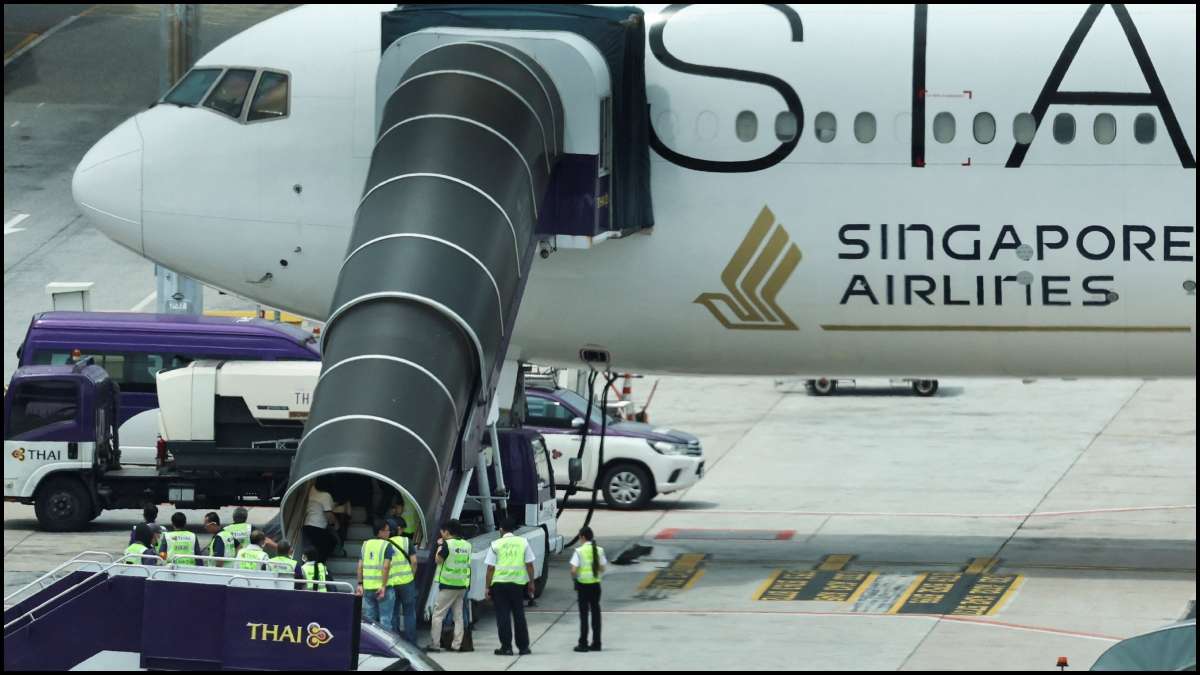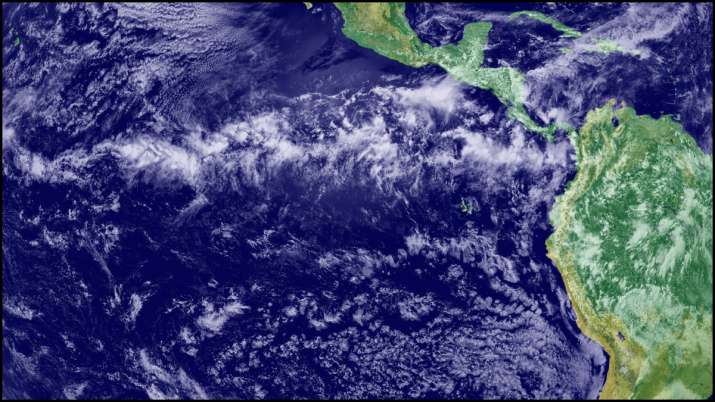
Singapore: As authorities continue to investigate the Singapore Airlines flight that was hit by “sudden extreme turbulence’ that left one man dead and 30 others injured, a former pilot said that the aircraft passed through an area known as the “Intertropical Convergence Zone” (ICZ), feared by many pilots. The ICZ area is what many pilots try to avoid but sometimes have no choice but to pass through as other options are limited, the Mirror reported.
The Boeing 777 flight from London’s Heathrow Airport to Singapore, with 211 passengers and 18 crew members aboard, was forced to make an emergency landing at Bangkok’s Suvarnabhumi Airport after it was hit by massive turbulence over the Irrawaddy Basin at 37,000 feet, the flag carrier of Singapore said. A 73-year-old British man identified as Geoffrey Kitchen died during the incident, possibly due to a heart attack.
The airline said it is fully cooperating with relevant authorities to investigate the turbulence that hit the London-bound flight. “Singapore Airlines offers its deepest condolences to the family of the deceased. We deeply apologise for the traumatic experience that our passengers and crew members suffered on this flight. We are providing all necessary assistance during this difficult time. We are working with our colleagues and the local authorities in Thailand to provide the necessary assistance,” said the airline.
What is an Intertropical Convergence Zone?
Former pilot Marco Chan said the turbulence likely occurred within the ICZ area around the Bay of Bengal. The area is notorious for thunderstorms and turbulence, and it can sometimes be unavoidable as these zones stretch over 50 nautical miles. The zone is known by sailors as the doldrums, where still air could leave ships stuck for days.
According to the National Aeronautics and Space Administration (NASA), an Intertropical Convergence Zone is the area which lies in the equator and where trade winds of the Northern and Southern Hemispheres come together. The intense sun and warm water of the equator heat the air in the ICZ, raising its humidity and making it buoyant. As the buoyant air rises and cools, the accumulated moisture is released in an almost perpetual series of thunderstorms.
The area appears as a band of clouds consisting of showers and occasional thunderstorms, according to the US National Oceanic and Atmospheric Administration (NOAA). Convective storms in the tropics tend to be of short duration and usually are small scale, but these short-lived storms can produce intense rainfall. The position of the ICZ varies seasonally because it follows the Sun; it moves north in the Northern Hemisphere summer and south in the Northern Hemisphere winter.
Singapore Airlines flight hit by clear-air turbulence
Sara Nelson, president of the Association of Flight Attendants-CWA, said initial reports appear to indicate that the Singapore flight encountered clear-air turbulence, which is the most dangerous type because it cannot be seen and is virtually undetectable with current technology. “One second, you’re cruising smoothly. The next, passengers, crew and unsecured carts or other items are being thrown around the cabin,” Nelson said.
Turbulences are caused by the meeting of air of different temperatures, pressures or velocities, where different wind patterns collide. Most turbulence occurs in clouds where there are up- and downdrafts of wind, according to BBC Weather’s Simon King, a former RAF officer. Clear-air turbulence, as the name suggests, is cloudless and cannot be seen, typically occurring at a height of 40,000-60,000 feet at the jet stream, a “river” of fast-flowing air.
A 2023 study published in the journal Geophysical Research Letters found that severe clear-air turbulence increased by at least 50 per cent over the North Atlantic Ocean from 1979 to 2020. The rise in such turbulences has been attributed to the effect of climate change on wind speeds in the upper levels of the atmosphere, researchers found.
“Moderate turbulence increased by 37 per cent, and light turbulence increased by 17 per cent during this period. (Turbulence in) Other flight routes over the US, Europe, the Middle East, and the South Atlantic also significantly increased, said the research. Experts have called for an urgent need for better investments in radar systems and forecasting for air travel, highlighting that emission cuts can reduce the impact of global warming.
